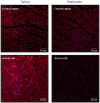Selective Inhibition of Succinate Dehydrogenase in Reperfused Myocardium with Intracoronary Malonate Reduces Infarct Size
- PMID: 29402957
- PMCID: PMC5799359
- DOI: 10.1038/s41598-018-20866-4
Selective Inhibition of Succinate Dehydrogenase in Reperfused Myocardium with Intracoronary Malonate Reduces Infarct Size
Erratum in
-
Author Correction: Selective Inhibition of Succinate Dehydrogenase in Reperfused Myocardium with Intracoronary Malonate Reduces Infarct Size.Sci Rep. 2019 Apr 17;9(1):6395. doi: 10.1038/s41598-019-42591-2. Sci Rep. 2019. PMID: 30996245 Free PMC article.
Abstract
Inhibition of succinate dehydrogenase (SDH) with malonate during reperfusion reduces infarct size in isolated mice hearts submitted to global ischemia. However, malonate has toxic effects that preclude its systemic administration in animals. Here we investigated the effect of intracoronary malonate on infarct size in pigs submitted to transient coronary occlusion. Under baseline conditions, 50 mmol/L of intracoronary disodium malonate, but not lower concentrations, transiently reduced systolic segment shortening in the region perfused by the left anterior descending coronary artery (LAD) in open-chest pigs. To assess the effects of SDH inhibition on reperfusion injury, saline or malonate 10 mmol/L were selectively infused into the area at risk in 38 animals submitted to ischemia-reperfusion. Malonate improved systolic shortening in the area at risk two hours after 15 min of ischemia (0.18 ± 0.07 vs 0.00 ± 0.01 a.u., p = 0.025, n = 3). In animals submitted to 40 min of ischemia, malonate reduced reactive oxygen species production (MitoSOX staining) during initial reperfusion and limited infarct size (36.46 ± 5.35 vs 59.62 ± 4.00%, p = 0.002, n = 11), without modifying reperfusion arrhythmias. In conclusion, inhibition of SDH with intracoronary malonate during early reperfusion limits reperfusion injury and infarct size in pigs submitted to transient coronary occlusion without modifying reperfusion arrhythmias or contractile function in distant myocardium.
Conflict of interest statement
The authors declare that they have no competing interests.
Figures






References
-
- Halestrap AP, Richardson AP. The mitochondrial permeability transition: a current perspective on its identity and role in ischaemia/reperfusion injury. J Mol Cell Cardiol. 2015;78:129–141. - PubMed
-
- Garcia-Dorado D, Ruiz-Meana M, Inserte J, Rodriguez-Sinovas A, Piper HM. Calcium-mediated cell death during myocardial reperfusion. Cardiovasc Res. 2012;94:168–180. - PubMed
-
- Jasova, M., Kancirova, I., Waczulikova, I. & Ferko, M. Mitochondria as a target of cardioprotection in models of preconditioning. J. Bioenerg. Biomembr. 10.1007/s10863-017-9720-1 (2017). - PubMed
-
- Liochev SI. Reactive oxygen species and the free radical theory of aging. Free Radic. Biol. Med. 2013;60:1–4. - PubMed
Publication types
MeSH terms
Substances
LinkOut - more resources
Full Text Sources
Other Literature Sources
Medical

